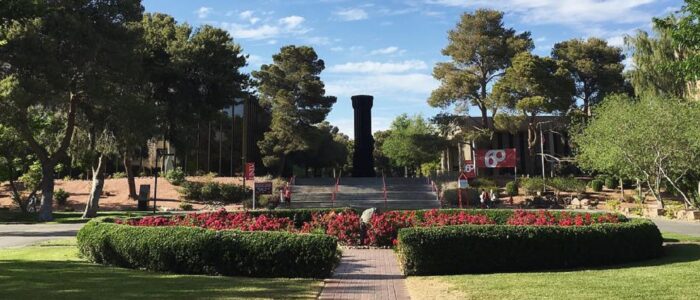Pytorch | TensorFlow | JAX

Biscuits and sausage gravy is firmly rooted in Southern American cuisine, which has a rich history influenced by African, Native American, European, and other culinary traditions. The combination of biscuits and sausage gravy reflects the availability of ingredients in the South, where biscuits (similar to a type of British scone) and pork products were common.
The concept of biscuits, similar to what Americans call biscuits, has British origins. Early settlers brought this baking technique with them to the American colonies. However, the American biscuit evolved over time to become lighter and fluffier compared to the denser British biscuit.
I just need everyone to know that for our last stop in Lexington, we did a gravy flight. That’s right, a gravy flight. pic.twitter.com/9sUBanlKt5
— Dr. Molly B. Atkinson (@MollyBAtkinson) August 2, 2024
Red Lion Cafe | College Avenue | Financial Position 2024 | $2.914B
Institutional Planning & Operations
Proud of who we are and excited for our future. We’re thrilled to welcome our newest Scarlet Knights! #upstreamredteam
.
.
.
.#NationalSigningDay #NSD #ScarletKnights #RutgersRowing #ncaarowing #bigtenrowing #bigten pic.twitter.com/CyXhRdpEV7— RutgersWomensRowing (@RutgersWRowing) November 14, 2024
The University of Northern Iowa does not currently have a student-run coffee shop based on available information. There is a coffee shop called Chats located in Maucker Union, which serves Starbucks coffee, Freshens smoothies, and other items, but it is not explicitly described as student-run.
Welcoming the 150th class! #uni150 pic.twitter.com/LPkbfBgpHZ
— University of Northern Iowa (@northerniowa) June 9, 2025
Freshman in college but always a farm girl!!! pic.twitter.com/erFP4KZUqr
— Rick DeGroote (@PRIMEFARM) September 18, 2024
“The world is changed by examples, not by opinions.”
– Marc Andreesen (Founder of Netscape, the first dominant web browser)
This content is accessible to paid subscribers. To view it please enter your password below or send mike@standardsmichigan.com a request for subscription details.
“Systems of Logic Based on Ordinals” Alan Turing PhD dissertation 1938
Computing Machinery and Intelligence 1950
May 28, 1936: Alan Turing submitted his paper “On Computable Numbers, with an Application to the Entscheidungsproblem” that would quietly spark the digital revolution with the design of a machine (Bombe) that significantly shortened World War Two in Europe.
“Science is a differential equation. Religion is a boundary condition.”
– Alan Turing (1912-1954) pic.twitter.com/51WTlKFmXr
— Physics In History (@PhysInHistory) May 16, 2025
– Alan Turing (1912-1954)
#OnThisDay May 28, 1936, Alan Turing submitted his paper “On Computable Numbers, with an Application to the Entscheidungsproblem” for publication.
It quietly laid the foundations of modern computer science.
A thread: pic.twitter.com/meIuDnn9VI— History of the day (@hist_of_the_day) May 28, 2025
Related:
Facilities | WRNS Studio Frist Health Center (~$48.5 Million)
The purpose of the American Standard for Nursery Stock — ANSI Z60.1 — is to provide buyers and sellers of nursery stock with a common terminology in order to facilitate transactions involving nursery stock. This standards establishes common techniques for
(a) measuring plants,
(b) specifying and stating the size of plants,
(c) determining the proper relationship between height and caliper, or height and width, and
(d) determining whether a root ball or container is large enough for a particular size plant.
This document — prepared under a grant to ANSI by AmericanHort — is a communication tool for the exchanges of products and services but does not provide buyers with any assurance of the health or quality of the nursery stock being specified or sold. It does not cover labor resources.














The American Hort standards landing page is linked below:
American Nursery Stock Standards
CLICK HERE for the current edition of ANSI Z60.1 2014
The 2014 revision should be entering another revision cycle though the pandemic has slowed standards setting among many non-profits. We encourage front-line staff to participate directly in the American Hort standards setting enterprise. CLICK HERE for contact information.
We sweep through the status of best practice literature for anything related to exterior assets in education communities during our Bucolia colloquium. See our CALENDAR for the next online meeting; open to everyone.
Issue: [18-160]
Category: Bucolia, Pathways
New update alert! The 2022 update to the Trademark Assignment Dataset is now available online. Find 1.29 million trademark assignments, involving 2.28 million unique trademark properties issued by the USPTO between March 1952 and January 2023: https://t.co/njrDAbSpwB pic.twitter.com/GkAXrHoQ9T
— USPTO (@uspto) July 13, 2023
Standards Michigan Group, LLC
2723 South State Street | Suite 150
Ann Arbor, MI 48104 USA
888-746-3670
